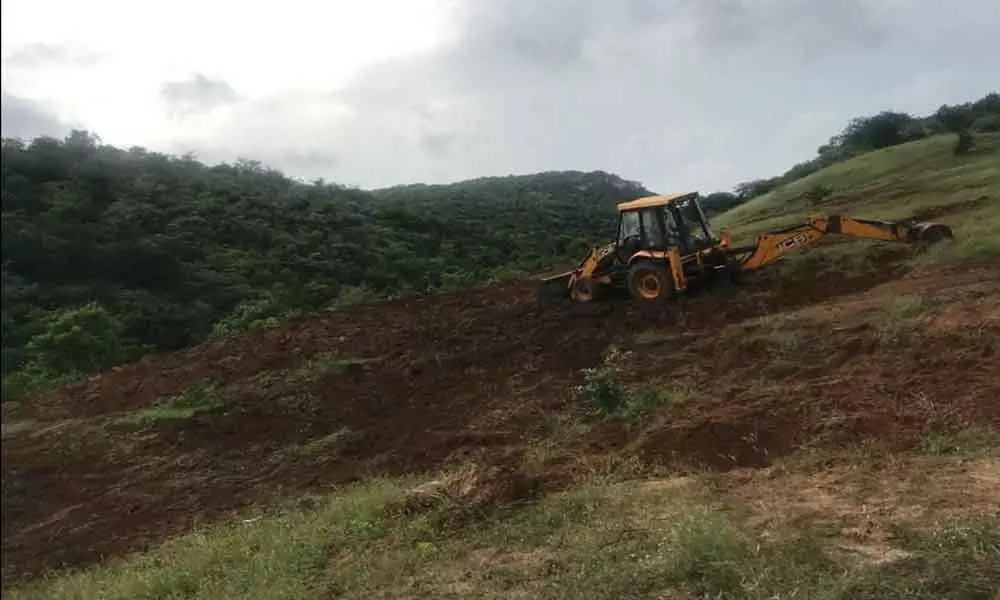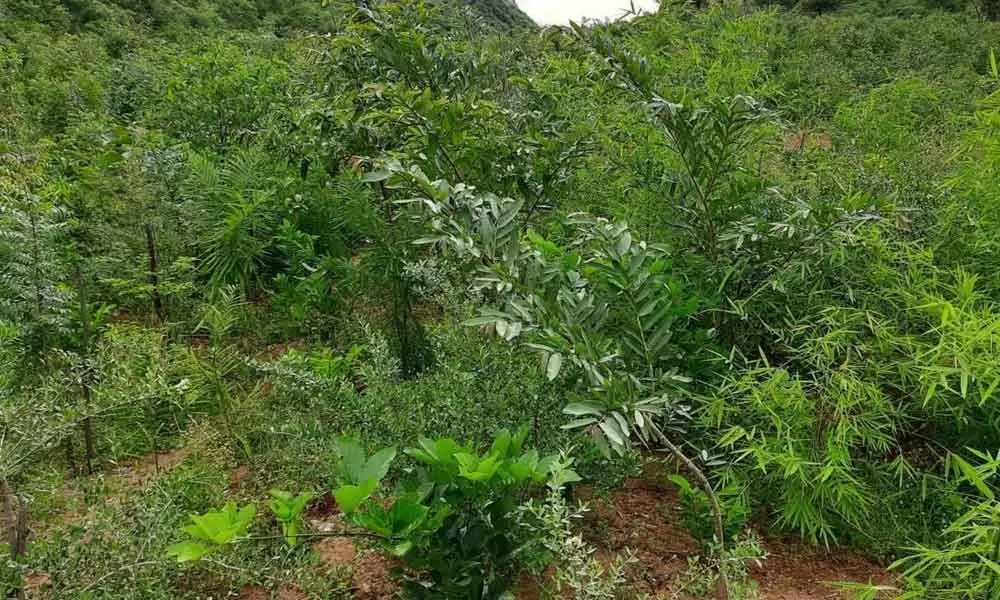Miyawaki forests to bring pristine green glory to city
♦The Telangana government is planning to develop forests on Yadadri model which makes deft use of Miyawaki principles
♦ Several locations such as Tangeduvanam, Smrithivanam and Lakkaram in Yadadri district were transformed into jungles in a span of a year.
♦ As many as 75 locations under GHMC limits have been identified to create natural forests
A forest develops over hundreds of years but thanks to Akira Miyawaki, a Japanese botanist,a natural forest can be developed in three years and becomes maintenance free. The Blue Planet Award-winning botanist from Japan is celebrated for his very particular approach to afforestation.
Under the 'Miyawaki Method,' native species are planted close to each other in such a manner that plants get sunlight only from the top. According to Shubhendu Sharma, founder of Afforest, an expert in the Miyawaki method, who has successfully developed natural forests in India, states there are six step process. (See box).
G Chandrashekar Reddy, Addl PCCF and Dean ofForest College and Research Institute(FCRI), says, "The objectives of the Yadadri model are to create a forest not a plantation and develop a natural capital in every village to compensate forest lost." As experimental plots, several locations such as Tangedu vanam, Smrithi vanam and Lakkaram in Yadadri district were transformed into jungles in a span of a year. As many as 75 locations under GHMC limits have been identified to create natural forests.
V Krishna, additional commissioner, urban biodiversity wing GHMC said, "We are not following the Miyawaki model entirely, instead we have researched and developed our own Yadadri model which is similar as Miyawaki but is cost efficient. Yadadri natural forest model has proven successful in not just making an area green but also creating rich biodiversity in the place. It is also cost-effective compared to the Miyawaki model and helps us to take up more plantation in the available land and achieve thicker forest at a lower expenditure."
Out of the 75 locations, ground preparation works are going on in more than 10 locations and would be completed by July end. Selection of species is distributed in such a manner that it has dominant, pre dominant and lower canopy species. So that each species take up the specific tiers as it is a three tier model. With time, these trees will grow into a forest with tall canopy trees blocking out sunlight and shorter plants and trees, forming a densely wooded area that humans and animals can only enter with some difficulty.
"The trees will need two years of regular care, including watering, de-weeding, mulching and adding of beneficial microorganisms, after which they will become self-sustaining and maintenance-free. In five years, the forest will be almost full-grown, and in ten years, will resemble a 100-year old forest," said V Krishna.
Six Steps To Dense Greenery
Make a list of native species. Under Haritha Haram, some of the species selected are Vepa, Ippa, Narepa, Rose Wood, Neredu, teak, Pongala, Maredu, Usiri, Chinduga, Chirumanu, Juvi, Velaga and many others.
Trees that grow to 6-feet, 12 feet, between 20-40 feet and above 40 feet are selected but the same species are not planted close to each-other. Trees that grow above 40-feet form the canopy.
The soil is prepared for percolation of water, wheat, husk is used to top the soil. Under the Yadadri model, dried leaves, grass and green manure is spread on the decided area and urea of 120 kg per acre for accelerating decomposition is done.
One metre-deep pit is dug and saplings planted. Under Haritha Haram, 4,000 saplings are planted per acre. Evergreen and deciduous species are evenly spread.
Sticks are inserted to give support to the sapling and to ensure that they grow straight.
Monitoring needs to be done. Under the Yadadri model, bunds are developed all round the area and trenches dug up to conserve water.
















